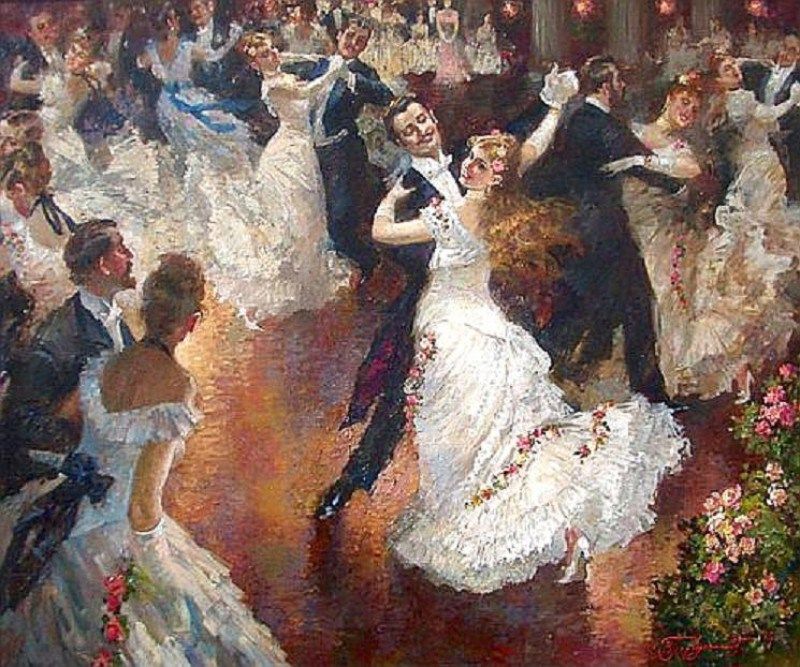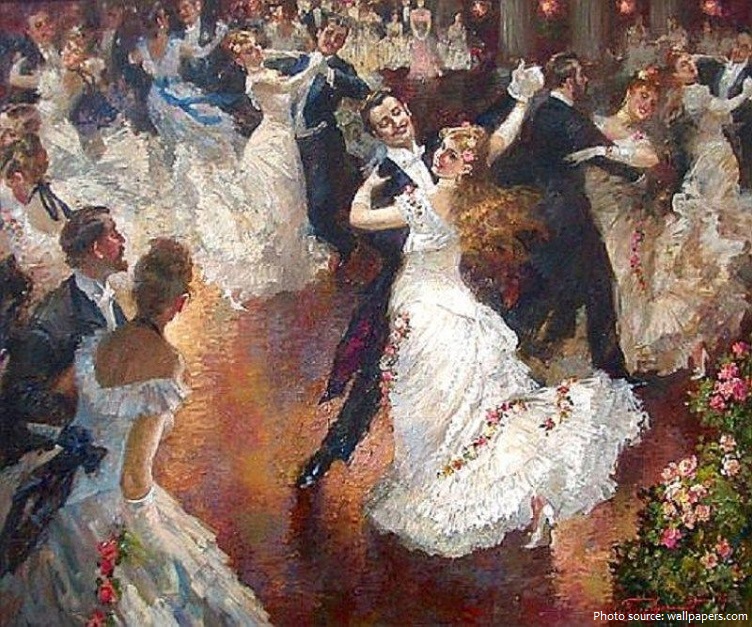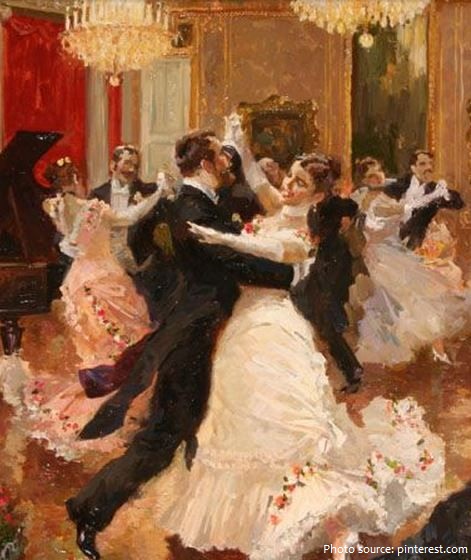
Waltz is highly popular ballroom dance evolved from the Ländler in the 18th century.
Characterized by a step, slide, and step in 3/4 time, the waltz, with its turning, embracing couples, at first shocked polite society.
The waltz is a smooth dance that travels counter clockwise around the dance floor. In addition, it uses a lilting action called rise and fall. There are many different styles of this dance and each style has its own unique form. However, the main difference has to do with closed and open position movements.
There are many references to a sliding or gliding dance that would evolve into the waltz that date from 16th century Europe.

Modern form of Waltz was born in suburbs of Vienna and mountain regions of Austria, and was created not for use by folk dancers, but for court. Before that time, all court dances were rigid, stately, solemn,
procession-based, very tightly controlled, with complicated moves and timings.
During the 17th century it was played and danced in ballrooms of the Habsburg court. By the end of 18th century this once Austrian peasant dance had been accepted by high class.
During the middle of the 18th century, the allemande form of the waltz was very popular in France. Originally danced as one of the figures in the contredanse, with arms intertwining at shoulder level, it soon became an independent dance and the close-hold was introduced.
One of the earliest appearances of the waltz in a play was in the opera Una Cosa Rara by Soler in 1786. This set the tempo of the waltz at andante con moto, which is defined as “a walking pace.”
In 1812 the dance was introduced into England as ‘the German Waltz’. It caused a huge sensation. When Lordn Byron first saw it, he found his lady friend clasped closely by “a huge hussar-looking gentleman, turning round and round to a confounded see-saw, up-down sort of turn like two cockchafers spitted on the same bodkin”.
It is not known exactly when the waltz was introduced to the United States. It was probably brought to New York and Philadelphia at about bigining of 1800, and by the middle of the Nineteenth Century was firmly established in United States society.
In California, the waltz was banned by Mission priests until 1834 because of the “closed” dance position. Thereafter a Spanish Waltz was danced. This Spanish Waltz was a combination of dancing around the room in closed position, and a “formation” dance of two couples facing each other and performing a sequence of steps. “Valse a Trois Temps” was the “earliest” waltz step, and the Rye Waltz was preferred as a couple dance.

By 1864 Strauss composed exclusively dance music and propelled the Waltz genre to popularity, for which he earned the title “The Waltz King”. Three years later, the famous song “On the beautiful blue Danube”, most commonly known as “Danube Waltz”, was composed and is today recognised as unofficial Austrian anthem.
In the 19th century, the word primarily indicated that the dance was a turning one – one would “waltz” in the polka to indicate rotating rather than going straight forward without turning.
With the advent of competitive ballroom dancing in the early 20th century, waltz was divided into two categories — the slow Waltz and fast Viennese Waltz — both based on the New Waltz from Boston. In order to stand out from their competition, ballroom dancers invented new steps and styling for each kind of waltz.
During the time of First World War, waltz dance routines become much more relaxed, with dancers dancing much closer to each other than before. Sadly, newborn craze of Foxtrot almost completely destroyed the popularity of Waltz after the end of WW1, especially in United States where it was completely overshadowed by other dances after 1921.

The waltz, especially its closed position, became the example for the creation of many other ballroom dances. Subsequently, new types of waltz have developed, including many folk and several ballroom dances.
Composers of famous waltzes include Frédéric Chopin, Pyotr Ilyich Tchaikovsky, and Johann Strauss and his sons, especially Johann Strauss the Younger, who was known as “the Waltz King.”
The largest waltz consists of 1,598 pairs, and was achieved by Comune di Trieste (Italy) in Trieste, Italy, on 15 December 2018. This record attempt was held at the Piazza Unità d’Italia.
